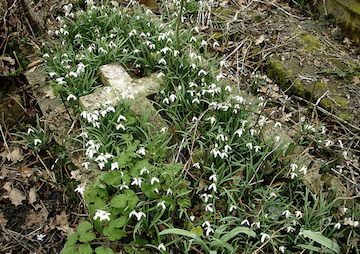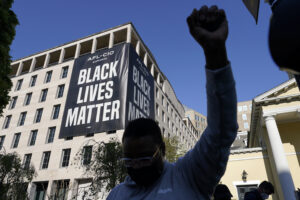The Condition of Black Cemeteries Mirrors Our Regard for Black Lives
While Confederate memorials continue to draw public funding, across the United States time and divestment have transformed historic black cemeteries into trash dumps and overgrown forests. yasamaster / CC BY-SA 2.0
yasamaster / CC BY-SA 2.0
While Confederate memorials continue to draw public funding, across the United States time and divestment have transformed historic black cemeteries into trash dumps and overgrown forests, reports Seth Freed Wessler at The Nation.
Greenwood’s crawling vines and cottonwood trees are now easily mistaken for an undeveloped swath of dense green amid the streets of Hillsdale, a struggling suburb in northern St. Louis County. But Greenwood is not undeveloped; like the municipalities that surround the cemetery, where as many as 50,000 bodies are buried, it is the product of divestment. The same crooked inheritance that confines lives in North County, as locals call the cluster of nearly all-black towns north of St. Louis, also covers the graves of Greenwood.
In the community that helped the Black Lives Matter movement grip the national conscience, all three commercial cemeteries founded for the burial of black bodies have fallen into disrepair. In the 1990s, one of these was dug up to make room for an airport expansion. In Greenwood, in the bareness of winter, fallen gravestones can be spotted through brittle reeds. By summertime, they’ve disappeared. Barbara Harris’s story is repeated by one St. Louis family after the next: visits to loved ones’ graves thwarted by overgrowth and poison ivy.
It’s the same across the United States. “This is the situation we observe: There’s a black cemetery on the other side of the hill, and it began around the same time as the white one, and the white one is in fine shape—the black one is not,” says Michael Trinkley, whose South Carolina–based Chicora Foundation conducts archeological studies of cemeteries. Their decline is tied directly to past and present patterns of investment: Memorials to white lives are left in trust, padded with private and public wealth; collective memorials to black lives fall into the red financially and slip from view. “The underlying problem is that black cemeteries have been left without the resources necessary to operate,” Trinkley notes.
Continue reading here.
— Posted by Alexander Reed Kelly.
Your support matters…Independent journalism is under threat and overshadowed by heavily funded mainstream media.
You can help level the playing field. Become a member.
Your tax-deductible contribution keeps us digging beneath the headlines to give you thought-provoking, investigative reporting and analysis that unearths what's really happening- without compromise.
Give today to support our courageous, independent journalists.






You need to be a supporter to comment.
There are currently no responses to this article.
Be the first to respond.